Key Points
- Kia Niro EV prices start from $66,590 for the Air trim
- 460 km of range and 11 kW AC | 84 kW DC charging
- Rivals the BYD Atto 3 and Cupra Born
The second-generation Kia Niro EV is now available in Australia, priced from $66,590 to $72,360 before on-road costs, with up to 460km claimed driving range, and a modern exterior and interior overhaul.
It’s also available in a hybrid (HEV) drivetrain, though Australians won’t be offered a plug-in-hybrid (PHEV) option as per its short-lived predecessor.
The entry-level Niro EV S is eligible for most Australian state incentives, but the GT-Line’s price tag crosses the thresholds for select rebates. Check out our comprehensive guide for more information.
The electric small SUV takes on the more affordable BYD Atto 3 and MG ZS EV, along with the upcoming new-generation Hyundai Kona Electric, Tesla Model Y, and almost crosses price-wise with its very own Kia EV6 flagship.
✅CAR REVIEW: 2023 Kia Niro EV review
Size and design
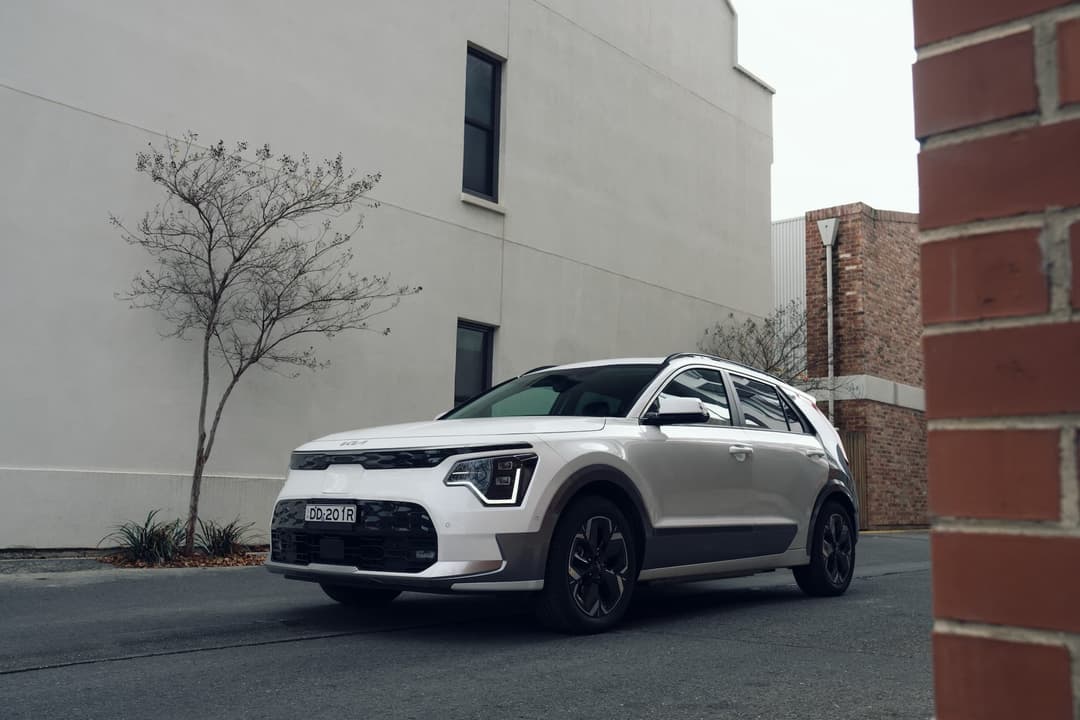
Riding on an internal combustion engine ‘K3’ platform shared with the Hyundai i30 Sedan, the all-new Kia Niro EV is made in its home country of South Korea and shares similar dimensions with the popular Kia Seltos small SUV.
Compared to its predecessor which dates back to 2016 (but sold in Australia from 2021), it is 45mm longer and 20mm wider with a 20mm longer wheelbase.
The Niro EV gains a revised exterior design with the company’s ‘Tiger Face’, ‘heartbeat’ LED daytime running lights, and boomerang-shaped LED taillights.
Gone are the blue accents of the previous model; in is a contrasting C-pillar colour on the top-spec GT-Line variant only. Exterior colours including the new Cityscape Green and Mineral Blue are matched with a gloss black C-pillar, while Snow White Pearl comes exclusively with a Steel Grey C-pillar and cladding.
All other colours have a body-matching C-pillar colour and gloss black cladding.
Inside, the all-new Niro EV is reminiscent of its larger Kia EV6 counterpart with the same two-spoke steering wheel, joined infotainment and cluster screens, and headrests that double as a clothes hanger.
The South Korean company says it incorporates sustainable materials, including recycled polyethylene terephthalate (PET) plastics on its headliner, benzene, toluene and xylene isomer (BTX) chemical free paint on the door panels, and biobased polyurethane (Bio PU) seats using Tencel from eucalyptus tree fibres exclusive on the GT-Line trim.
The five-seater SUV offers two rear seat ISOFIX child seat anchor points, three top tethers, and the rear-row can split-fold 60/40.
Despite its traditional underpinnings, the Niro EV now offers a 20-litre frunk.
Kia says it retains the same drag coefficient of 0.29 as the outgoing model with open slits on its C-pillar and active air flaps to help improve aerodynamic efficiency.
Battery, Range and powertrain
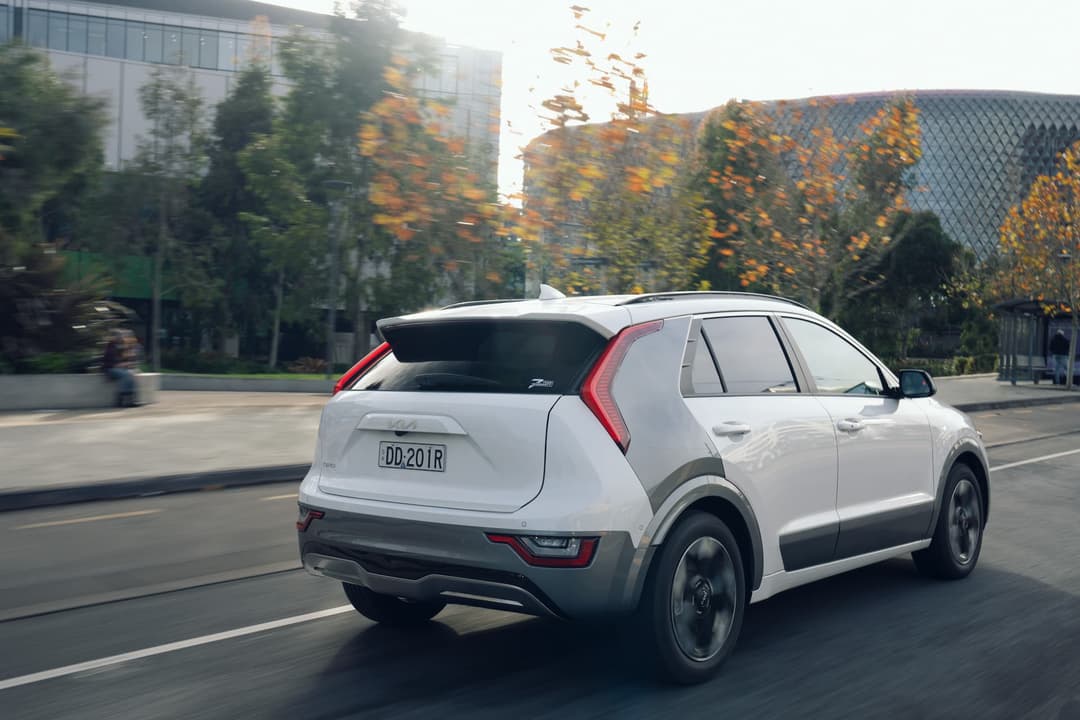
The 2023 Niro EV is available in only one battery and powertrain across both its variants.
A 64.8kWh (usable) lithium-ion polymer battery is mated with a front-wheel drive electric motor to yield a claimed driving range of 460km (WLTP), claimed energy consumption of 162Wh/km (WLTP), and 0-100km/h acceleration time in 7.8 seconds.
Kia engineers have also subjected the Niro to a full local ride, handling and steering program to comply with Australia’s road conditions.
Kia says the new Niro EV can now tow up to a 750kg braked, which is up from 300kg in its predecessor, or a 300kg unbraked trailer.
Charging
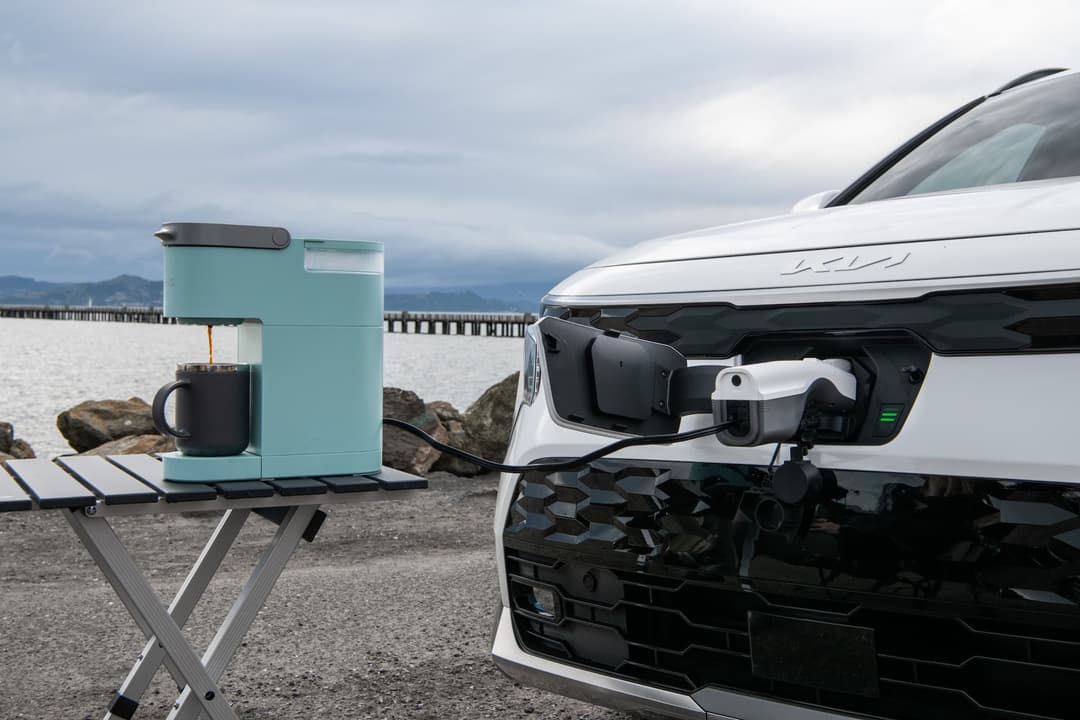
Based on a standard 400-volt class architecture, the Niro EV’s onboard charger can top-up at up to 11kW AC.
Kia Australia has confirmed to zecar that the all-new Niro EV can fast charge at up to 84kW DC speeds when on a 150kW, 230 amp public charging station. Though, media overseas media have been told that it is capped at 72kW DC and can hold the fast charging curve for longer than the outgoing model.
Using a standard Type 2/CCS2 connector, the automaker claims it can AC charge from 10 to 100 per cent in 27 hours and 30 minutes using its included 2.3kW trickle charger plugged into a standard household socket. That time is cut to 9 hours and 25 minutes on a 7kW AC wallbox and 6 hours and 20 minutes on an 11kW AC charger.
Charging from 10 to 80 per cent takes around 65 minutes on a common 50kW DC fast charger, while it's only 45 minutes on a 100kW DC public station that tops-up the Niro EV at up to 72.9kW. Interestingly, Kia claims the same charge can be two minutes faster on a 150kW DC or higher DC fast charger, which will max out the Niro EV’s charging capabilities at 83.8kW.
The electric crossover doesn’t feature a heat pump.
New for the Niro EV is vehicle-to-load (V2L) capability that allows users to power or charge any electrical product like laptops, coffee machines and microwaves, and even trickle charge other EVs at up to 3.6kW. All models have an interior V2L plug underneath the rear seats, while only the hero GT-Line is capable of exterior V2L using an adapter at its front-mounted charging port.
Zecar understands battery preconditioning via the built-in navigation (GT-Line only) is not available in Australia.
Like its latest Kia, Hyundai and Genesis counterparts, it’ll offer a range of regenerative braking intensity levels, including ‘i-Pedal’ for one pedal driving and an automatic regen function using the front radar.
Safety and technology
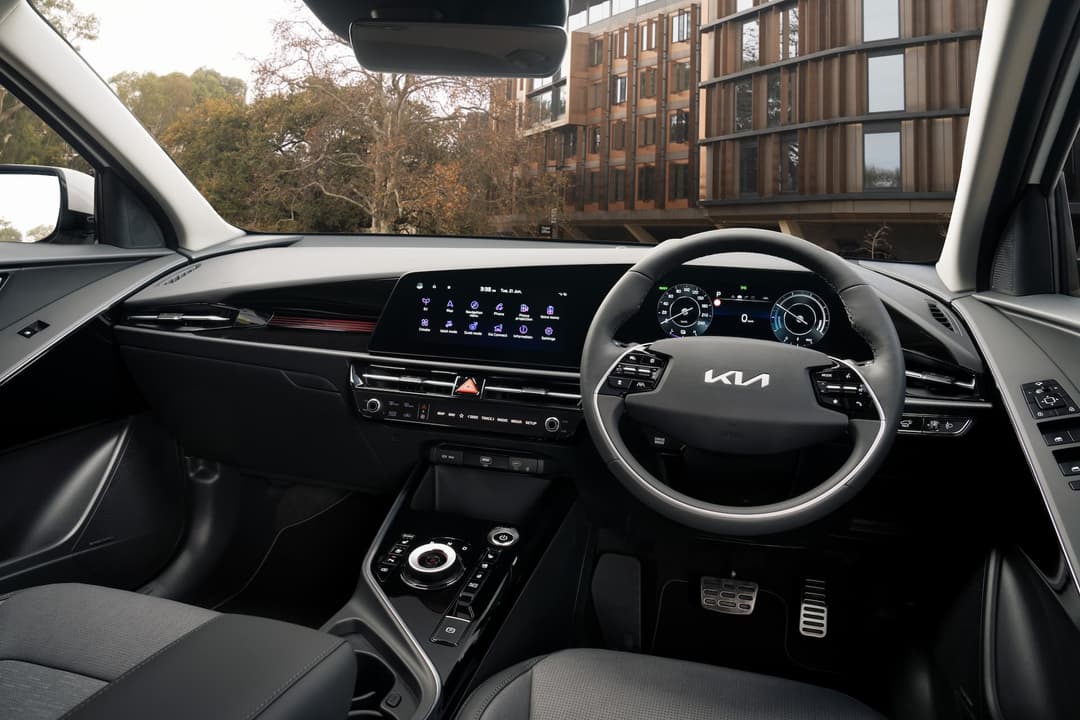
The 2023 Kia Niro EV has received a five-star ANCAP safety rating under the 2022 testing criteria.
The electric small SUV comes with a gamut of active safety assistance systems as standard from the entry-level S model. This includes automatic emergency braking (AEB) with car, pedestrian, cyclist and junction turning detection, lane following and lane keeping assist, blind spot and rear cross traffic warning and collision avoidance assist, stop/go smart cruise control, and intelligent speed limit assist.
All models also feature a centre side airbag, rear view camera, rear parking sensors, rear occupant alert, safe exit warning, driver attention alert, and high beam assist headlights.
Stepping up to the top-spec GT-Line model adds rear AEB, front parking sensors, safe exit assist (instead of warning), and LED headlights.
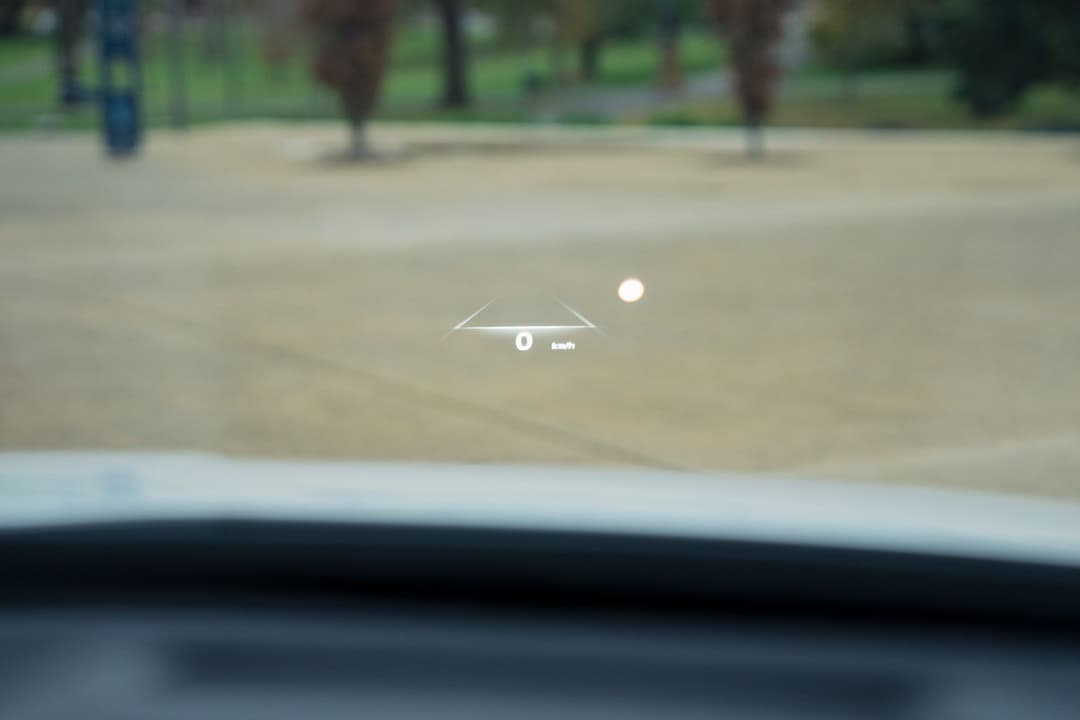
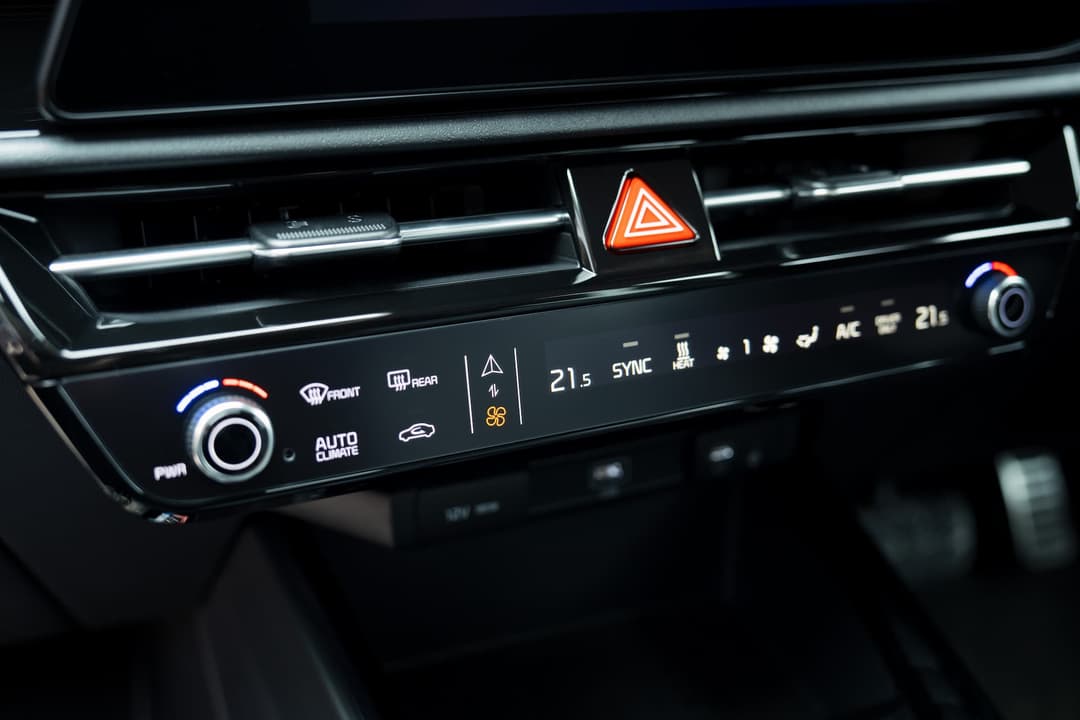
Technology-wise, the base S trim comes standard with an 8-inch infotainment system capable of wireless Apple CarPlay and wireless and wired Android Auto, a 10.25-inch digital driver’s instrument cluster, and USB-C and 12-volt charging ports.
Meanwhile, the GT-Line gains a larger 10.25-inch widescreen infotainment system, albeit with wired-only smartphone projection, built-in maps and a Qi wireless charger.
In Australia, the all-new Niro EV is the first vehicle to debut Kia Connect telematics and smartphone app – but is exclusive on the flagship GT-Line and free for seven-years.
Using an embedded Optus SIM card enables live services within the touchscreen, including built-in voice control, weather, traffic and personal calendar information, a direct ‘eCall’ emergency services button and more.
Zecar understands Kia Connect won’t enable over-the-air software updates at launch in Australia, but will be introduced later on.
Additionally, the Kia Connect iOS and Android smartphone app allows owners to remotely access the Niro EV such as locking/unlocking doors, pre-start the cabin’s climate control, schedule charging times, send a navigation destination to the system and more.
Price and models
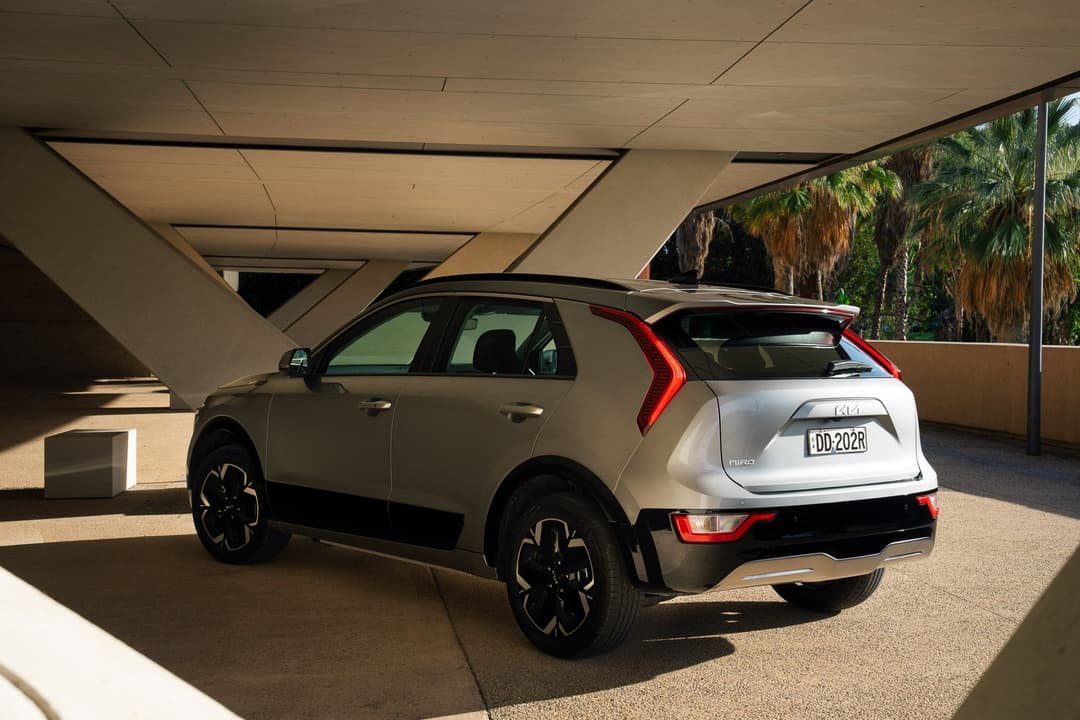
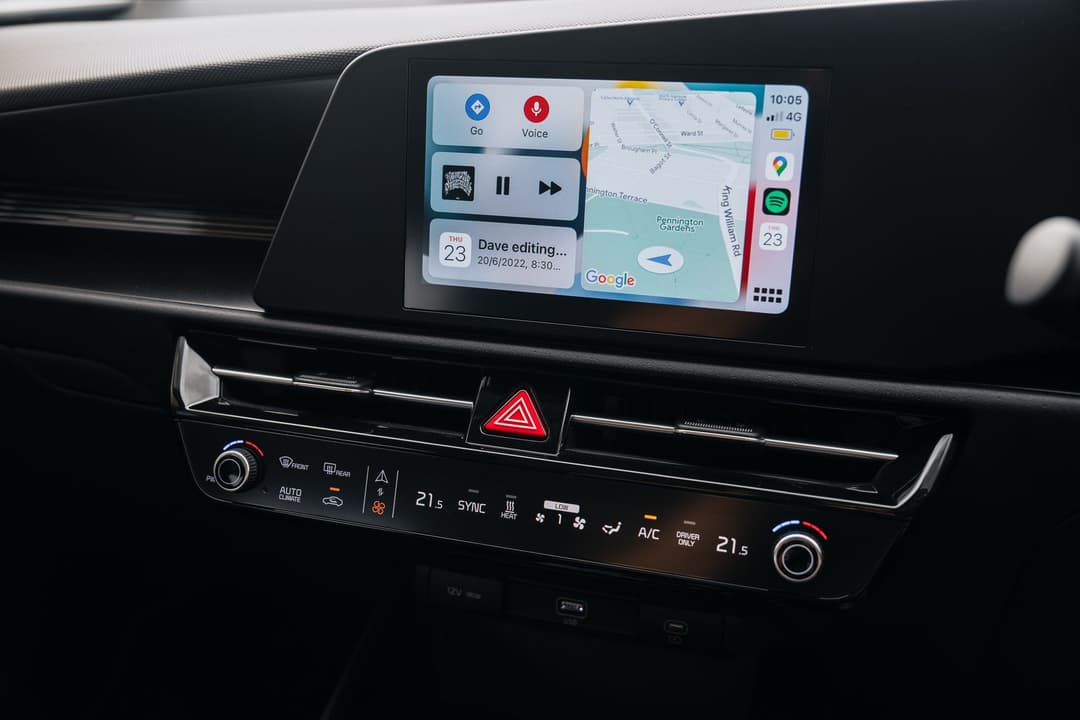
Niro EV S price: $66,590 before on-road costs
The Niro EV S model comes with as standard:
- 64.8kW usable lithium-ion battery
- 17-inch alloy wheels (215/55)
- Gloss black exterior cladding and roof rails
- Soft-touch charcoal mesh-textured interior
- Charcoal cloth and artificial leather seats with metallic black door trim and dash
- Safety assistance suite (details above)
- 10.25-inch infotainment system with wired Apple CarPlay, wired Android Auto, built-in maps, and Kia Connect services
- Kia Connect built-in cellular connectivity and mobile app (free for seven-years)
- 10.25-inch driver’s digital cluster
- Multi-function touch sensitive climate and infotainment control panel
- Eight-way power driver seat with two-way powered lumbar support and six-way manual front passenger seat
- Keyless entry and push button start
- Dual-zone climate control with rear-row vents
- Six-speaker sound system (four speaker, two tweeters)
- Interior V2L plug
- Halogen projector-type automatic headlights, LED daytime running lights, LED taillights, and LED front and rear fog lights
- Acoustic film windscreen and solar glass all-round
- Auto up/down driver window
- Electronic dial-type shifter
- Regenerative braking paddle shifters
- Rain sensing wipers
- Shark fin antenna
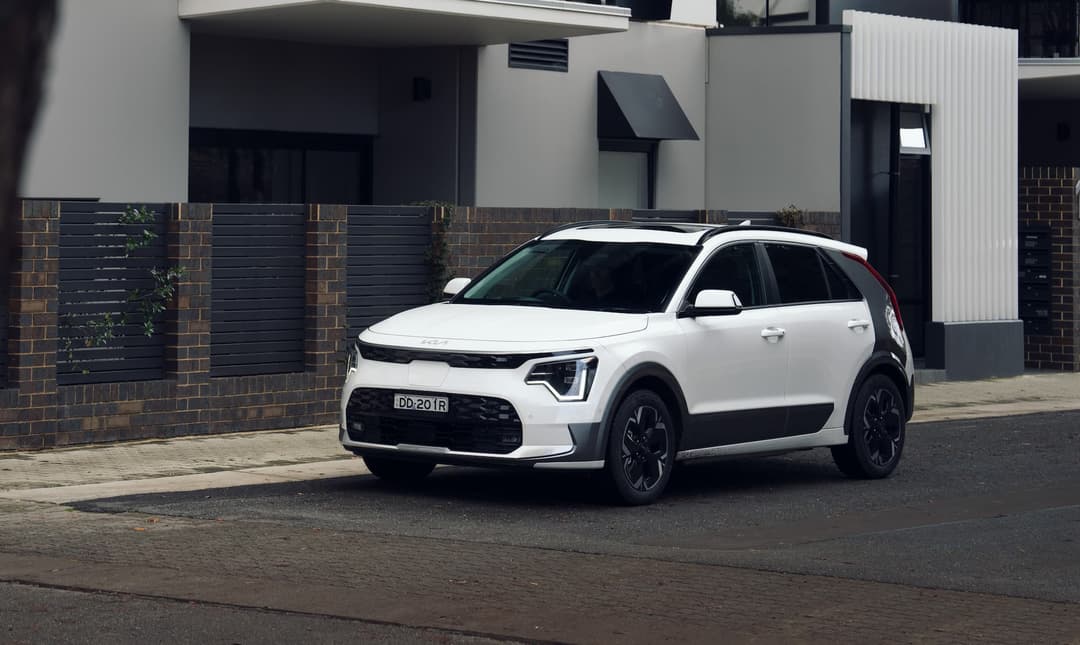
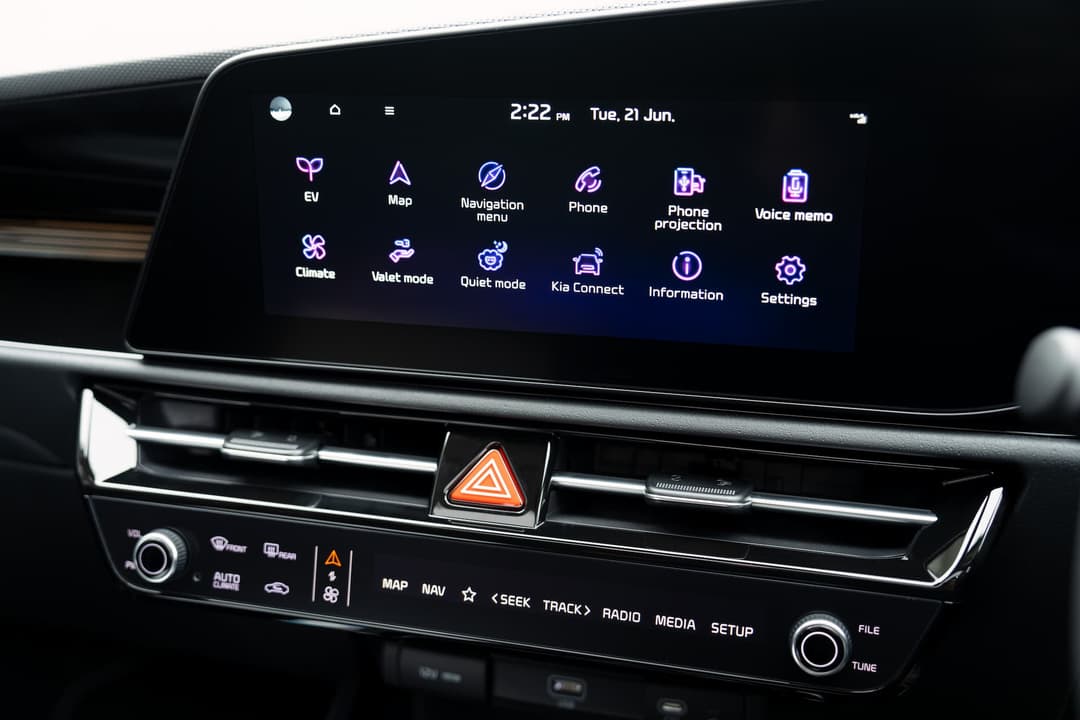
Niro EV GT-Line price: $72,360 before on-road costs
The flagship Niro EV GT-Line adds:
- Charcoal artificial leather seats (perforated bio PU) with gloss black door trim and dash
- Reverse AEB, front parking sensors, and safe exit assist (details above)
- 10-inch head-up display (HUD)
- Qi wireless charging pad
- Eight-way power front passenger seat with two-way power lumbar support
- Premium relaxation seat mode (front passenger only)
- Heated and ventilated front seats
- Heated steering wheel
- Eight-speaker Harman/Kardon Premium sound system (four speakers, two tweeters, one centre speaker, one subwoofer)
- Remote smart parking assist*
- Smart power tailgate
- 64-colour front ambient interior lighting
- Exterior V2L adapter
- LED projector-type automatic headlights
- Sunroof with tilt and slide function
- Rear privacy glass
- Laminated front windows
- Auto up/down front windows
- Metal door scuff panels
- Alloy sports pedals
- LED interior and boot lights
- Power child lock
*Kia Australia notes the remote smart park assist feature should not be used within Western Australia as it does not comply with ‘The Road Traffic Code 2000’.
Check out our Niro EV GT-Line review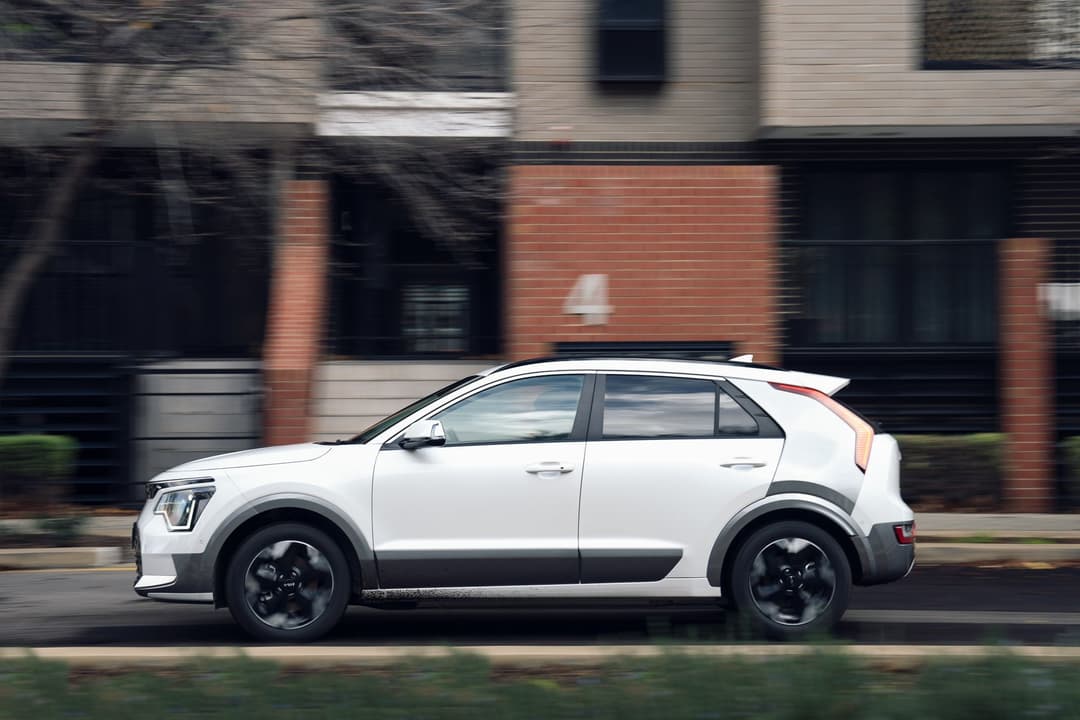
Niro EV Options
- Standard paint – no cost: Clear White
Premium paint – $520:
- Aurora Black Pearl
- Interstellar Grey
- Steel Grey
- Runway Red
Two-tone premium paint – $520:
- Cityscape Green with black C-pillar
- Mineral Blue with black C-pillar
- Snow White Pearl with Steel Grey C-pillar and cladding
Warranty and servicing
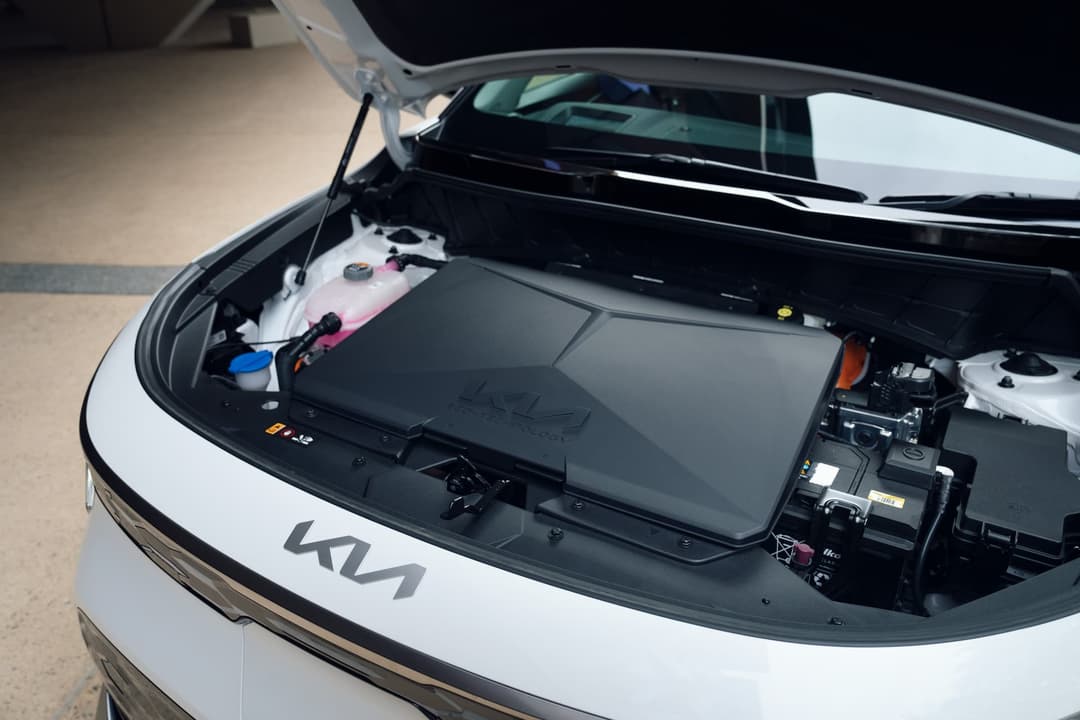
Like all Kia’s, the new Niro EV comes with a seven-year, unlimited kilometre vehicle warranty and seven-year/150,000km high-voltage battery warranty, and up to eight-years of roadside assistance coverage when serviced at an authorised Kia dealer.
It uses a seven-year capped price servicing scheme with checkups required every 12 months/15,000km.
The first seven services for the Niro EV costs $1754 in total or $250 on average per visit. Prepaid service plans are also available at three, five or seven years priced at $621, $1187 and $1754 respectively.
How does it compare to other EVs?
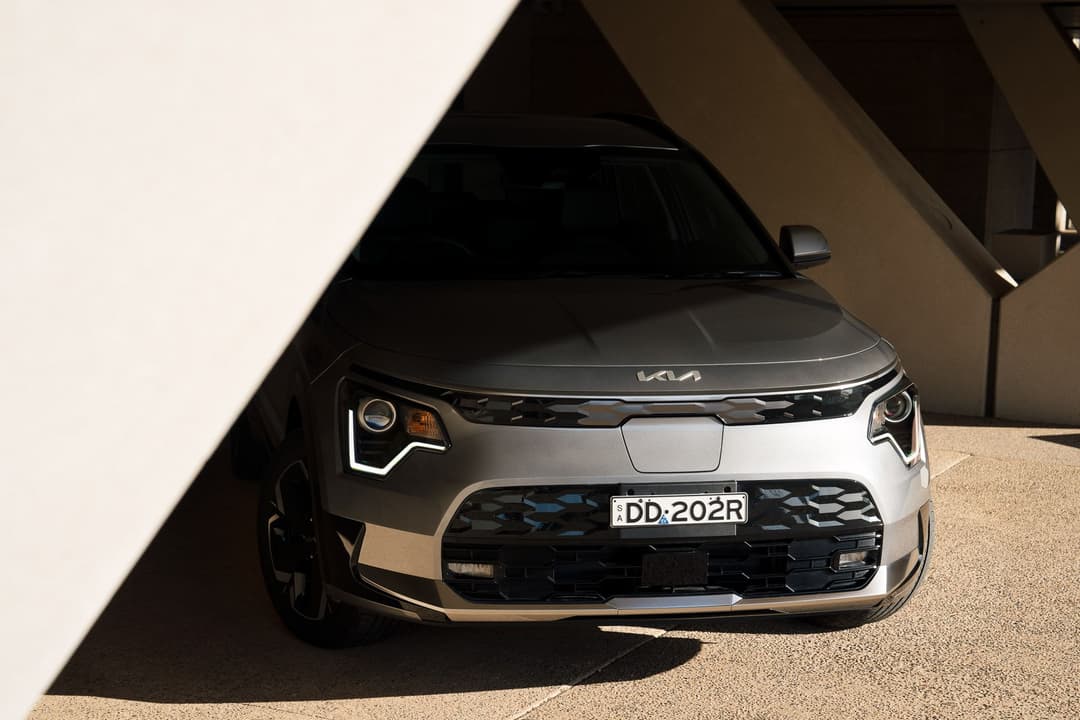
Niro EV FAQs
About the author
Stay up to date with the latest EV news
- Get the latest news and update
- New EV model releases
- Get money savings-deal




